Boxers relive their classic ’70s Featherweight Wars!
“Canada’s greatest unknown athlete” is what former boxer Art Hafey has often been labeled. But to many a fight fan who witnessed the West Coast “Featherweight Wars” of the ’70s, the diminutive boxer was one of the key players in the mix. Now his story has been captured on film in Brad Little’s new documentary “Toy Tiger.”
The world premiere was held this past weekend at the El Portal Theatre in North Hollywood, California during the 2009 Valley Film Festival. Hafey traveled to Los Angeles to attend the showing, trading in his native Northern Lights for the bright lights of Hollywood.
At the “Toy Tiger” screening were several of the film’s stars including Art Hafey, Ruben Olivares, Bobby Chacon, Mando Muñiz, Olympic Auditorium photographer and lens legend Theo Ehret, and writer/historian Bill O’Neill. Also lending their support at the function were current boxer Mike Anchondo, former fighters Carlos Palomino, Randy Shields, John Montes, Rick Farris, Frankie Duarte, trainer Pepper Roach (with daughter Rayenn), trainer Jack Mosley, announcer Danny Valdivia, and Sylvia Ramos (widow of Lightweight Champ Mando Ramos).
Outside of the historic Art Deco theatre, patrons were greeted at the entrance by a lively Mariachi band with Bobby Chacon acting as an honorary bandmate. The two-time featherweight champ danced to the music and mugged with the musicians while the ticket holders entered the building for a social hour before the screening.
There was also a poignant twist in the day with a sudden tragedy occurring. One headliner in the film, Danny “Little Red” Lopez, was scheduled to attend but at the onset of the festivities, a couple of people whispered to me in confidence that his older brother and former pugilist, Ernie “Indian Red” Lopez, had passed away that day. Reports are that the welterweight contender had suffered from dementia.
Just another sad reminder that in boxing, there are a million stories to tell.
Hafey’s story is one true tale that took place in L.A. during the Wild Wild West days that is now of boxing lore.
Hailing from the mining town of Stellarton, Nova Scotia, Hafey was the #1-rated Featherweight in the world who never got a shot at the title. In this film, director Little does a fine job of combining rare photos, news footage and candid interviews that help detail “Toy Tiger’s” life during the gritty ’70s prizefighting era. Witty narration by J.J. Johnston blends in nicely as the film explores the history of these famous featherweight battles.
While best known as “Toy Tiger,” Hafey was also called the “Mexican Assassin” after his victories over a string of Latino foes. On the flip side, he was also saddled with the moniker of “Whispering Smith” for his subtle, quiet, and calm personality outside the ropes. While talented and tough on the canvas, his ring style somehow never translated to the fans. “If only Hafey was Mexican!” the headlines screamed. The film details the fact that even though he was the #1 Featherweight contender at the time, Hafey always seemed to be mishandled, mismanaged or just plain mismatched.
Although at the time, the Southern California landscape was littered with plenty of featherweights all panting for a chance at fame and fortune, Hafey stood out for what he didn’t get–a shot at that world title. That is the pivotal point of the film: Why didn’t Art Hafey ever get his chance? His size, race and personality were determining factors but the film also points out corruption and exploitation of the boxers as other reasons why Hafey was overlooked.
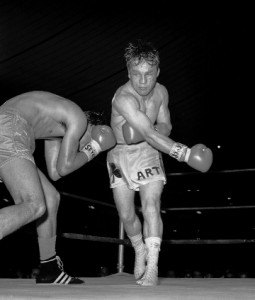 So was his height a disadvantage? “Everyone was taller than Art Hafey,” a fighter during this era states. At only 5′ 2″ tall, the combatants were always taller than the “Toy Tiger.” But he didn’t let his size or stature get in the way. Managed by Suey Welch and trained by Burke Emery, Hafey was quirky but tough as the film reveals that he chose to spar with spar with 16 ounce gloves. And in a career-defining moment in 1973, Hafey shockingly knocked out Ruben Olivares, Mexico’s greatest prizefighter of that time. The two would later tangle in a rematch, this time with Olivares getting the split decision over his nemesis.
So was his height a disadvantage? “Everyone was taller than Art Hafey,” a fighter during this era states. At only 5′ 2″ tall, the combatants were always taller than the “Toy Tiger.” But he didn’t let his size or stature get in the way. Managed by Suey Welch and trained by Burke Emery, Hafey was quirky but tough as the film reveals that he chose to spar with spar with 16 ounce gloves. And in a career-defining moment in 1973, Hafey shockingly knocked out Ruben Olivares, Mexico’s greatest prizefighter of that time. The two would later tangle in a rematch, this time with Olivares getting the split decision over his nemesis.
During this golden era in boxing, Hafey, with other young guns across the globe, all merged to California eyeing the same prize: A World Championship. And Art, who was barely over five feet tall, went toe to toe with the “Best in the West” when fighting at the Fabulous Forum and the Olympic. Through the years of 1972 to 1976, the Canadian slugger took on the likes of Danny “Little Red” Lopez, Alexis Arguello, Octavio Gomez, among many others. He was also a sparring partner for two young hot prospects at the time, Bobby Chacon and Ruben Castillo.
“Irish” Art (who wore a shamrock on his satin trunks) went on to build a solid record of 53-8-4, 36 KOs but never had his dream fulfilled. He retired after losing by a TKO to Danny “Little Red” Lopez in 1976 at the Forum. He was just 25 years old.
After his retirement from the ring, Hafey was officially diagnosed with Myotonia Congenita (muscle stiffness from birth) which is also known as Thomsen’s disease. His father also suffered from this congenital disease which was passed on to two of his five children, Art and his older brother, Lawrence. Perhaps Hafey always knew he was fighting on borrowed time as he is seen on the big screen explaining, “I wouldn’t sit between rounds during my amateur fights because I’d get stiffness in the legs.” The rare disease can also be exacerbated by adrenaline. And while some may say his explosive power punching stemmed from this muscular disease (sufferers tend to get a bulky bodybuilder frame), his condition also caused his muscles to lock up rendering him at-times useless in the ring.
How he fought through this debilitating illness is what makes his story even more compelling.
When the lights dimmed, the story of the “Toy Tiger” unfolded as the film showcases Hafey’s skills in the ring, weaving in snippets of conversation with fighters, managers, and promoters integral in that timeline.
But the highlight of the event was seeing history come to life through the boxers attending the screening in person. While sitting in the darkened theatre, I watched and listened as the fighters paid tribute to each other in their own unique ways. Their reactions were priceless. While they mocked each other’s “old-school” ’70s bad hairdos and clothing by pointing and laughing, the boxers also groaned and winced in pain for their fallen comrades when the screen flashed scenes of wicked body shots and knockout punches.
They playfully heckled each other from their seats, reliving the glory on film, but also recalling heartbreaking defeats forever captured on film. And Chacon stood up and shadowboxed when the film showed his win over Olivares (after the “Schoolboy” had been previously beaten twice by the tough Mexico City boxer) as rows of viewers celebrated his victory all over again. Decades later, the hard-fought victories will always remain a source of pride for these men.
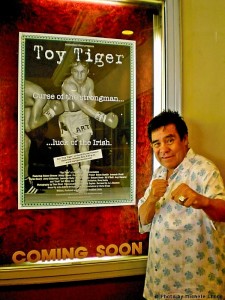 And for 98 minutes, there up on the movie screen were old black-and-white stills from their classic fights, vintage reels from generations ago, and current chats with Hafey, Castillo, Chacon, Muñiz, O’Neill, Don Fraser, Don Chargin, and others from that bygone era.
And for 98 minutes, there up on the movie screen were old black-and-white stills from their classic fights, vintage reels from generations ago, and current chats with Hafey, Castillo, Chacon, Muñiz, O’Neill, Don Fraser, Don Chargin, and others from that bygone era.
As the years fly by, sometimes the only remains of their time in the limelight lies in these photo and film tributes. Old photos and faded memories. Sadly for some, dementia pugilistica (“punch-drunk” syndrome) has stolen what’s left of their memories. And when their physical skills are snatched away by Father Time, crude film footage can be the best lasting evidence of the fighters in their prime.
Luckily, “Toy Tiger” gives new fans and young boxing aficionados an opportunity to see and hear about these legendary featherweight wars.
After the showing, as the attendees made their way out of the lobby, I heard people saying excitedly, “Is that him?” and “There he is!” Since this was a film fest just over the hill from Hollywood Boulevard, I turned to see what movie star the guests were clamoring about. Half expecting to see Brad Pitt or George Clooney, I peered through the crowd and got a glimpse of the man of the hour. It was the aptly-named “Toy Tiger” himself, Art Hafey. He was beaming as friends and admirers shook his hand and patted him on the back.
“I love coming to L.A. and being treated so well,” the humble Hafey told our group, and added jokingly, “Back home, I’m a nobody.” The Canadian is modest; he was heralded in his hometown and inducted into the Nova Scotia Hall of Fame in 1980. When asked his advice for aspiring fighters, he told us his simple words of wisdom, “I would encourage them to work on their fundamentals. Learn the basics, get those down. They have to work on the fundamentals and really own their skills!”
Now living in Trenton with his wife, Hafey is just like everyone else in these times of recession and looking for gainful employment. He has suffered from impaired vision after his battle against Rodolfo Moreno; in the movie, he demonstrates the many blind spots that to this day still impede his sight.
Many in the business felt then, and certainly feel now, that the scrappy fighter deserved a chance for a title fight. Ruben Castillo, a former sparring partner of Hafey’s, is one of them, “He deserved a chance. I was even a four-time world title challenger!” The boxer did get his own chance against four worthy opponents: Alexis Arguello, Salvador Sanchez, Juan LaPorte and Julio César Chávez. Remembering his early years in the gym with Hafey, Ruben shakes his head, “Man, he hit so hard! He was like a bull. I was just 16 years old when I sparred with him.”
And after the screening, while in the lobby of the theatre, I saw Castillo and former foes embrace each other with mutual warmth and respect. Boxing creates a bond, a brotherhood between the fighters. It was never so evident than at the Saturday night premiere.
A strange bond it may be, but the support they have for each other is also the strongest I’ve ever seen–a camaraderie hard to explain, even harder to understand.
Only the two warriors know what goes on in their three-minute “mini-wars” and this fraternity of fighters is something that has always intrigued me. After pounding away at each other, inflicting pain and punishment until the bell rings, how is it that they can go on to share a laugh or even share a beer together?
Castillo tries to put it into perspective for me. “After the fight’s over, you give them that hypocritical hug…that’s the sportsman in you,” says Castillo (70-10-2, 38 KOs). “But we really were trying to beat each other’s faces in! When you get into that squared circle, it’s different. When you want a title, you want to beat everyone down.
“And when you fight for a championship, these guys you fight for the title are the ones you come to respect. The ones that became champions, the ones that stayed a champ, we become friends. Now at some of the boxing banquets, seeing these fighters there is like a family reunion to me!”
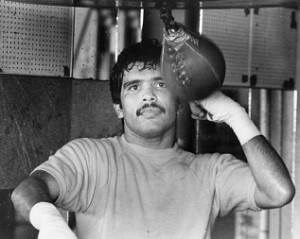 Castillo explains that is an earned respect between fighters; not everyone makes the cut. “I’ve had 82 professional fights,” he states. “But I don’t have 82 friends!”
Castillo explains that is an earned respect between fighters; not everyone makes the cut. “I’ve had 82 professional fights,” he states. “But I don’t have 82 friends!”
“Ah, tocayo!” the good-natured Ruben Castillo shouts when I asked him to pose with Ruben Olivares. Tocayo is a Spanish term used when two people have the same name. “He’s a dear friend of mine,” Castillo says. “Besides Art Hafey, no one hit harder than Ruben Olivares.” He and the other Ruben both fought on the same show before, worked out together but never faced off in the ring. Castillo tells me stories of their shared history with the tiniest details remembered–dates, arena names, undercard info all intact–even though all this happened over 30 years ago.
The outgoing Castillo then makes an announcement that everyone is invited to the after-party at the famous Magic Castle in Hollywood. It would’ve been great to eavesdrop as the fighters reminisced of decades past, but since we had a prior commitment, I had to leave my goodbyes at the theatre.
Former pugilist Rick Farris–who knows firsthand of what the ’70s boxing scene was really like–was also at the premiere. In those days, the bantamweight was managed by Suey Welch (Hafey’s own manager) and has been in the ring with “Little Red” Lopez, Olivares, Chacon, Arguello, among others. “Art Hafey was one of my favorite featherweights from the era,” Farris recalls.
“I remember my arms hurting after working out with Art; he was a bruising kind of a puncher who was always on you!” he remembers. “He was a good fighter, he just got the raw end of a few deals.”
Speaking to him a couple of days after the event, Farris, now a successful lighting technician in TV and film, commented, “I credit Brad Little for bringing his concept to the screen. This was a great event for the champions in this era. It really took me back to that time.”
Going back to that time was a labor of love for Director/Writer/Producer Brad Little, who admits to spending “five years and 12 days working on the film.” A fellow Canadian like Hafey, Little tells me he lives about an hour away from the boxer. The young filmmaker, sporting a bright patchwork blazer at the premiere, says he was first inspired to make this documentary by a photo he saw in a boxing magazine. The Theo Ehret picture was of Danny Lopez (in an Indian headdress) and Arturo Pineda (in a sombrero). Never forgetting that image, Little became mesmerized by this particular era in boxing. A cache of old Beta fight tapes and an article by Dan Hanley about the featherweight wars cemented his quest to tell Art Hafey’s story.
The director told me he is pleased with the screening but is happiest to have brought the fighters together once again. “I thought the scene outside the El Portal with the Mariachi band was quite magical–I wish I had more time to enjoy it.” Little, who is flying back home today, says it was an exhausting weekend, but well worth it. “The footage I have of Ruben, Bobby and Art horsing around is hilarious,” he relays.
The filmmaker will continue to generate interest for “Toy Tiger” and, due to demand, has a DVD now available for fans. “My immediate plans are to arrange a screening on the East Coast,” Little says. “I’m planning on doing more festivals with the film and marketing the DVD (which contains over six hours of extras) for now.”
The question may always linger of “What would’ve happened if Art Hafey ever got a title fight?”
Who’s to say if he would’ve, could’ve had his hand raised in victory?
In this case, the sweet science should be renamed the “bittersweet” science since Hafey never was given any shot at any title.
And after the applause dies down and the spotlight fades, the “Toy Tiger” will go back to his life in Nova Scotia far, far away from the days when he fought in front of thousands of cheering fans. The film chronicles his journey from Canada to California, and that road was never easy for Hafey. While the record books may say he never attained a championship, others offer a different opinion.
In his own right–if for just one night–Art Hafey was declared a featherweight champion by those in attendance at his premiere.
Premiere photos by Michele Chong
Fight photos courtesy of Brad Little
Art Hafey at his film premiere and his heyday; The two Rubens meet again; Director Brad Little with Muñiz, Valdivia and Duarte; Ruben Castillo in his training days; Bill O’Neill; John and Melinda Montes; Randy Shields; Carlos Palomino and Anthony Huizar; Pepper and daughter Rayenn Roach; Bobby Chacon and the Mariachi band; Olivares poses with the paper “Toy Tiger”



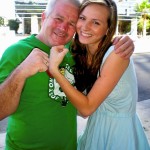
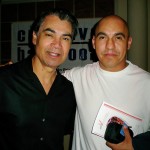
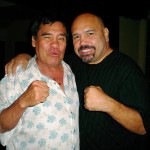
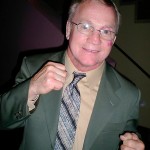
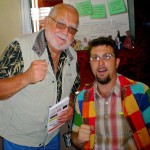
hi,art,lawance,the hafey family… just a freind…dunc macneil gary macneils brother.let me know how you guys are doing?
Excellent !!!! Where can I buy the DVD ? I live in HRM.
Comments are closed.